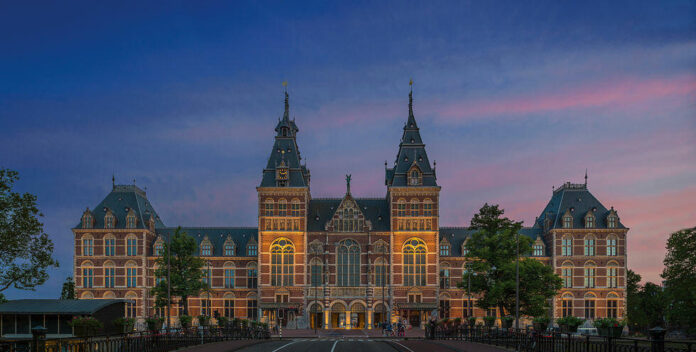A groundbreaking new exhibition at the Rijksmuseum focuses on personal accounts of slavery in the era of art known as the golden age of the Dutch.
The magnificent full-length portraits of Rembrandt from Opien Koppit and her husband Martin Sulman are two of the most valuable pieces in the Rijksmuseum Amsterdam, a prestigious national museum of art and Dutch history. Dressed in intricate jewelry and painted in a way only the wealthiest can afford, the pair epitomizes an era of economic prosperity and artistic flourishing, commonly referred to as the Dutch Golden Age. But dig deeper, and these portraits also tell a more complex and disturbing story, as Sulman’s derived his wealth from refining sugar produced by enslaved labor on plantations in Brazil.
For more than 250 years the Netherlands had large colonies in areas now known as Indonesia, South Africa, Curacao, New Guinea and beyond, where enslaved men, women and children were treated as human beings. The revolutionary exhibition at the Rijksmuseum , too often seen as something done by a minority abroad, shows how slavery permeated all walks of life, both in the colonies and on national soil, and left behind a legacy that is still felt in the country today.
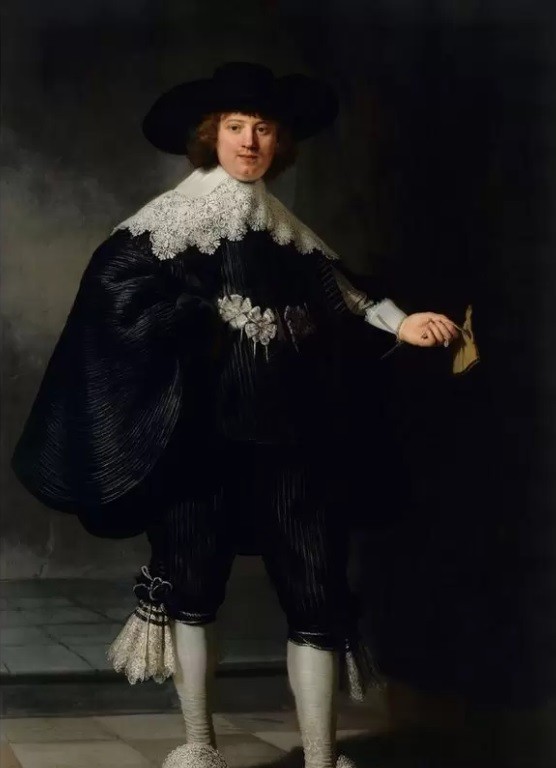
Martin Sulmans, whose portrait of Rembrandt is one of the most valuable pieces in the State Museum – a got his wealth from enslaved labor in Brazil (Source: Rijksmuseum)
“It’s not just the elite, but the artisans who make their living as subcontractors or suppliers, like blacksmiths or carpenters. works on a shipping dock or clerk contracts. If you look at the whole chain, it is much more entrenched in Dutch society than has been said. It’s important to tell our visitors that it’s not just history that happened far away in the colonies, it’s really our national history that concerns us all,” said Evelyn Sint Nicolaas, curator of history at the Rijksmuseum, on Hfrance.fr Culture.
The Protestant Dutch were at first reluctant to participate in the slave trade, and one pastor called it “a Papist aberration committed by the Spanish and the Portuguese. Over time, however, attitudes began to change. As the Dutch expanded their operations abroad. “It became clear that if we wanted to compete and take over from the Portuguese, the Dutch had to participate in the slave trade, and this led to a change in the idea propagated by the church,” says Sint Nicolaas. “They looked in the Bible for stories legitimizing slavery and argued that slavery was acceptable in the Old Testament because of a story in which Noah spelled the descendants of Ham into slavery,” she explains. There is no explicit mention of Ham as black in the Bible. “It’s such a complex argument that it’s still hard for me to see that it’s possible … but only a few clergymen have questioned it, and then you get the dehumanization of the other,” says Sint. Nicolaas.
“I think it’s important to emphasize that racism has not always existed,” says W. Alika Smölders, responsible for the history of the Rijksmuseum. “Discrimination is universal, but its legalization as a system under which a certain group of people had to serve the other half of the world was established by colonialism, and at the end of colonialism it was reinforced by racist” scientific “ideas. Racism arose out of colonialism, not the other way around.
Understanding this history involves confronting an uncomfortable truth for a nation long thought to be tolerated , and the Rijksmuseum itself understands that it was slow to tell these stories. “We thought we didn’t have the subjects to tell the story, and that was a big hurdle to start with,” Sint Nicolaas explains.
History
Preparing the exhibition took years of planning and recruiting new collaborators with relevant professional and personal experience. This includes Smölders, who was born in Curaçao and had emigrated from the Netherlands to Suriname in 1976, when it had just gained independence. “My ancestors were European, African and Asian. They were slave traders, slaves and migrant workers. This complicated colonial history was adopted more quickly in the Caribbean than in Europe, but now we are following their lead,” she said.
To do this, the museum decided to focus on the stories of the people involved in the system – those who benefited from it, suffered from it and eventually rebelled against it. It was especially important to focus on social history rather than the economic history of slavery when it came to telling the stories of those who were enslaved, the “people with names and names. The stories instead of being anonymous” of the slaves you find in the archives referred to as “cargo,” Sint Nicolaas says.
The reviews sayMany enslaved people are rare because reading and writing were forbidden in most settlements, so the team had to critically review the items in their collection. , carefully interpret contemporary written sources and tell their stories based on oral history. The acquisition of new items, including the ‘tronkos, a footstool used to prevent leakage, and the ‘kappa, a cast-iron cauldron used in sugar cane plantations, helped make the people’s experience of life more tangible. Slaves.

Objects such as “kappa (cast-iron teapot) and “troncos (footstool) help make the slaves’ experiences more tangible (Source: Rijksmuseum)
Kappa relates the story of Wally, a slave forced to work on a sugar cane plantation in Suriname. Tensions escalated when the new owner took away the precious free Sabbath that allowed the workers to socialize and grow their crops, and insisted that a pass was required to leave the plantation. Eventually the entire work force fled en masse into the surrounding woods. After the capture, 19 accomplices were pardoned, but the ringleader, including Wally, was sentenced to horrific torture and a slow death. The horror of this story is undoubtedly heightened by its personal nature and the realization that Wally and his comrades were treated so barbarically on the basis of a false religious argument created for economic gain.
As Martin Sulmans bought his raw sugar from a middleman, was he aware of the cruelty of the system that produced it? Schmölders said it was necessary to investigate the extent to which Dutch residents were aware of the abuses committed abroad.more. “First, people knew things through family. Those of the upper classes who went to the colonies could see slavery for themselves, and the crews of the ships could see slavery up close, so people didn’t know what was going on. “,” she said.
Even if he and Opjen didn’t know about the brutal reality of slavery, they surely would have known about the population there. escaped, as they would have seen them on their way to Rembrandt. the studio, which was located in the area with the largest black population in 17th-century Amsterdam. That it was a black population would probably surprise many. Officially, slavery was illegal and did not exist in the Dutch Republic but that did not stop people from buying slaves in the colonies and bringing them with them. A dark-skinned servant reported membership in a select group with a free tongue.
One of these men was probably Paulus Maurus, whose story unfolds through a brass necklace that goes back to the house where he worked. in. Originally catalogued as a dog collar when it entered the collection in 1881, the deion has never been critically analyzed, despite similar collars seen around the necks of African-born servants in paintings. The museum now wonders whether Paulus might have worn it, since necklaces of this type are often seen in paintings of young servants of African descent.
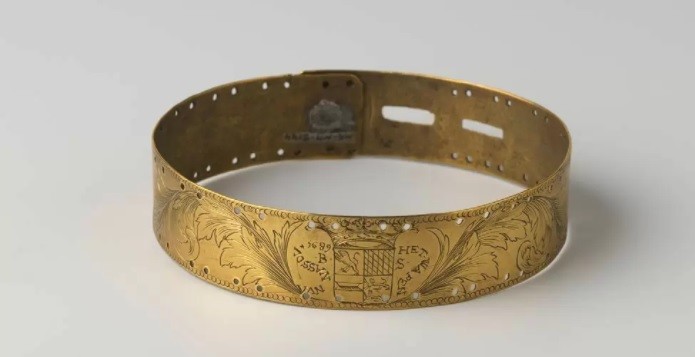
The story of Paulus Maurus, deployed with a collar that was originally catalogued in 1881 as a dog collar (Source: Rijksmuseum)
What would life be like for a free black man in Dutch society? “It’s much more complicated than you think,” Smelders says. “They were accepted on the one hand, they had families and children … at the same time, if you were a minority and saw stereotypes around you, it must have been very uncomfortable.”
Paulus herself was married and had children, and she “After a few generations it was barely noticeable that people had African DNA,” Smelders says. Black men usually married white women, which is another fact that surprises us, but at the time there were no restrictions on interracial marriage. and we can only assume that prejudice was less prevalent among the less wealthy classes. Smeulders wonders what the results would have been if DNA samples had been taken from a wide range of Dutch people. “What I’m most interested in is what it does to society when people realize that they are personally connected to both sides of the “The history,” she said.
Attitudes in society may well change when they differ. Different areas of Dutch history have also been explored in more detail. Historical accounts of the end of slavery often give European abolitionists a prominent role, but much less attention is given to resistance fighters within the system. This is especially true of Dutch history, given the country’s reluctance to follow the example of its European neighbors in abolishing slavery. While Britain abolished it in 1833 and France in 1848 (it was first banned in 1794, but Napoleon repealed the decree in 1802), the Netherlands followed suit until 1863.
The exhibition highlights the history of Toula, a freedom fighter. in Curaçao, inspired by the ideas of the French Revolution. When the Dutch Republic fell under French rule in 1795, becoming a RepubKavets, he felt that French rule applied to the Dutch colonies and that those who had previously been enslaved were legally free. However, his story is virtually unknown in the Netherlands because the Batavian period is little studied in Dutch history. “For us, the Batavian period is the period of French domination … it is not part of who we are in our own imagination, and the role that Afro-Caribbean countries played in that revolutionary time has never become part of our narrative. “In this way, people love Tula,” Smeulders says.
This historical limitation is what colonial historian Alex van Stiprian calls “the view from the ship, a history that dominated academic circles until the 1980s . It was a history standing on a ship and literally looking at colonized countries and colonized people without saying a word about the people. “Colonized,” he says. While academia has moved far beyond this view, it still has an important place in the public consciousness because the media loves the few historians who still share these views. “They get quoted all the time. Van Stiprian shrugs his shoulders. He sees it as part of populist nationalism, evident all over Europe, ‘the idea that’ they’re trying to take away” our history and” our tolerance. ,” he said.
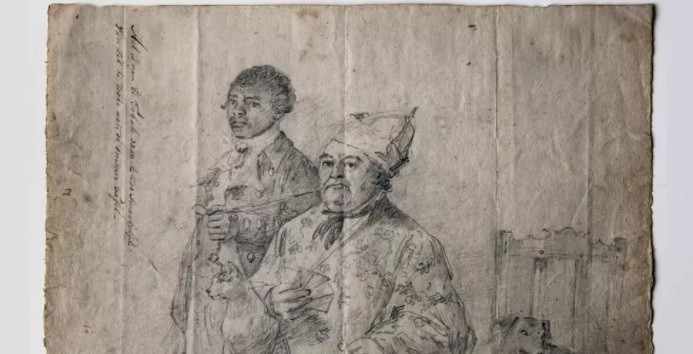
Augustes van Bengal with the Hendrik Klote pipe – the exhibition focuses on collateral social slavery to tell the stories of real people (Source: Rijksmuseum)
To understand these narratives, one need only watch the St. Nicholas Day parades, where white men and women appear wearing black masks and makeup in Zwarte Piet (Black Peter). According to Van Stiprianne, for decades the Dutch have convinced themselves that “we can’t be racist because we are tolerant … it’s just a joke, it’s our tradition,” she says. But the mentality is beginning to change. The national debate
Zwarte Piet began in 2011 after two young Afro-Dutch artists/activists, Quincy Gario and Jerry Afrie, wore T-shirts that read “Zwarte Piet is Racist” during a parade in Dordrecht. The poll showed that 50 percent of the people were in favor of changing the character to something else. “To change the point of view of half the population in 10 years … in Dutch conditions is fast,” Van Stiprian said.
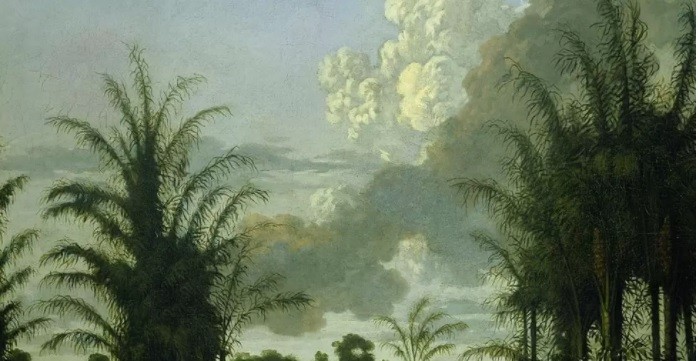
Dirk Valkenburg’s painting of a plantation, 1707 – the museum hopes this exhibition will change perceptions of the Dutch colonial past (Source: Rijksmuseum)
Van Stiprian believes that for attitudes to really change, the history of slavery and colonialism must be part of national history. He is currently part of the team working on the Dutch National Museum of Transatlantic Slavery, which he says will become “a landmark in the Netherlands, although it is unlikely to open before 2030. However, he is keen to emphasize that “there’s a lot of movement, things are changing, maybe not very fast, but they are changing . He believes that the appointment of Smeulders, whom he supervised with his doctorate, as head of history at the Rijksmuseum, is part of that change.
Her background certainly makes her particularly sensitive to challenges. “Accept what you like, and opening a dialogue about it is the only way forward. You can’t fix the past, but we are responsible for what happens here and now: we have to do better, knowing that this is national history and therefore something that concerns all of us,” she says.
“Museums in general have a very important task: to present knowledge in a way that touches people, making it so personal that people put themselves in the shoes of the people who lived at the time,” she said. I sincerely hope we can do well with this exhibition, and our task is to show that there are all these different sides to every story. As a museum, we have to present a more complex story that brings all these voices together .
“Slavery” was opened at the Rijksmuseum on June 5, 2021.






